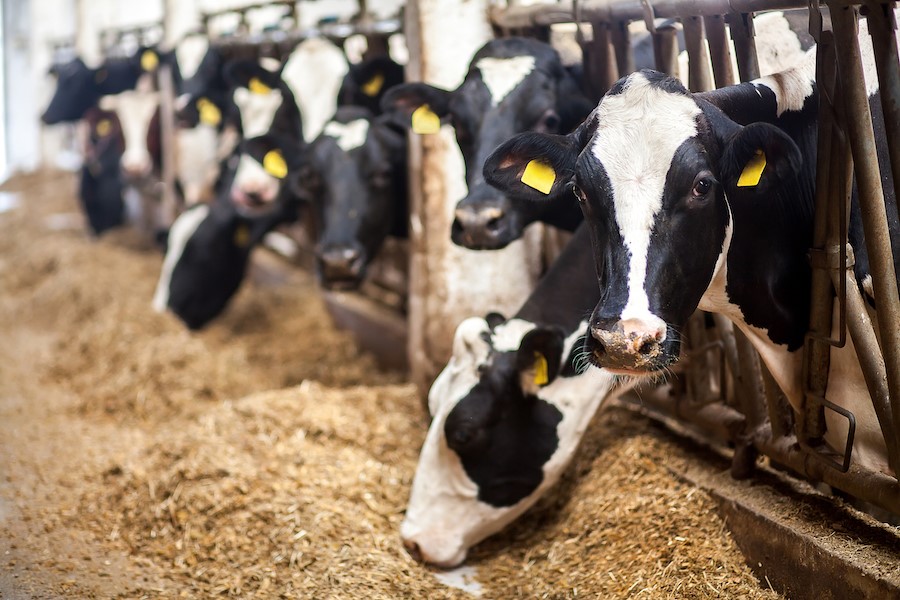- So far, we’ve considered a wide range of arable crops.
- It’s now time to look at livestock.
- We’ll place special focus on GLEAM, a model that strives to identify the environmental impacts of livestock and build a more sustainable sector.
The Basics
Regular readers of these articles will be familiar with two concepts:
Firstly, the components of Greenhouse Gases (GHC) are not created equal, which means standard practice is to convert to a single baseline figure, namely kg CO2 equivalent.
This delivers a comparable figure of Global Warming Potential (GWP) with CO2 representing a value of 1.
Early on the series, we explained that CH4 (methane) and particularly N2O (nitrous oxide) have much larger GWPs, with values of 84 and 264 times that of CO2. Both of these much more damaging gases are frequently associated with livestock production.
Second, CH4 volumes come primarily from Enteric Fermentation (EF). In simple terms, it’s expelled by “burping” of ruminants plus some from “what comes out of the back end”. N2O is more associated with manure and use of fertilizers (Chart 1). CH4 is the largest single source of GHG emissions in the livestock sector.

For livestock, we need to introduce a new measurement: intensity. Livestock is primarily consumed as meat, milk, or eggs, all as a protein source. For livestock, the standard measurement is kg CO2-eq.kg of protein (Chart 2).

This concept is important as it shows how inefficient beef and other ruminants (sheep, goats etc) are at converting feed into protein, especially when reared only for meat.
One of the reasons dairy cows have a much better profile than beef is because, eventually, after milk productivity decreases, the animal will be slaughtered as meat source, giving a dual function (this also applies to other ruminants).
As we shall see, a basic understanding of intensity will have a major impact on our SIA livestock choices.
The biggest surprise for many is that modern livestock farming has a lower level of intensity than more traditional methods. This, at first sight, seems counterintuitive, but the reason is that the protein is spread over a much larger physical output.
A second reason is that in low productivity systems, with low feed conversion ratios, less efficient herd management and low reproductive ratios, intensity is higher. This has major implications for different strategies to reduce GHG.
In developed countries, where feed densities are lower, farm management is the most likely key to improvement, whereas in the developed world improving livestock efficiency is a better target. Remember, intensity is measured per unit of protein, not per unit of land.
Emission densities are a core component of SIA as acting upon the data can increase production and reduce GHG emissions all at the same time, as well as quantify the environmental consequences of deforestation or creating new pasture to increase livestock production.
Global Livestock Environmental Assessment Model (GLEAM 2.0)
GLEAM is an all-encompassing model created by the Food and Agriculture Organisation (FAO), which describes it as:
“A GIS framework that simulates the bio-physical processes and activities along livestock supply chains under a life cycle assessment approach. The aim of GLEAM is to quantify production and use of natural resources in the livestock sector and to identify environmental impacts of livestock in order to contribute to the assessment of adaptation and mitigation scenarios to move towards a more sustainable livestock sector.
“GLEAM is a modelling framework that simulates the interaction of activities and processes involved in livestock production and the environment. The model can operate at (sub) national, regional, and global scale.
“GLEAM differentiates key stages along livestock supply chains such as feed production, processing and transport; herd dynamics, animal feeding and manure management; and animal products processing and transport. The model captures the specific impacts of each stage, offering a comprehensive and disaggregated picture of livestock production and its use of natural resources.”
There are many facets to the GLEAM system but some of the more significant ones are:
- The spatial resolution of GLEAM is sufficiently detailed to allow measurements and propose solutions at ‘local’ levels. This is important because of the large number of varying livestock practices around the world.
- Estimations of GHG emissions are made from each stage of production, which helps with remediation and identification of ‘choke points’.
- GLEAM is designed so other relevant models can be bolted onto it.
- GLEAM can assist with trade-offs in the livestock system as there are several complex relationships where the reduction of one GHG can lead to an increase in another one.
What Does GLEAM Teach Us?
We’ll use GLEAM in our studies to demonstrate that low carbon livestock production is achievable, certainly much lower than where we are today. This type of approach is urgently needed. Human population growth is increasing and, with expanding numbers of low- and middle-income countries’ populations that have sufficient income to purchase protein from meat, milk and eggs, corrective action is vital.
One thing that GLEAM does not discuss, although it alludes to it, is the substitution of animal protein by plant-based ones, such as the brands Impossible Meat and Beyond Meat. GLEAM was never designed for this part of the equation. Nor were value judgments made on the superficially attractive switching from, say, beef to pork or poultry consumption, for example.
Concluding Thoughts
GLEAM is a sophisticated mathematical and livestock model but there’s no need to understand its tiers of internal workings and interactions unless you happen to find this fascinating and are adept with such modelling. What is indispensable are the much simpler outputs and the consequences of those.
Other Insights That May Be of Interest…
Sustainable Agriculture: Maximising Yields Whilst Dryland Farming
